
![]()
![]()
Robots and automation for future industries
As part of the KLESF STEM webinar, a webinar titled “Increased Use of Robots and Automation - An Impending Feature for Future Industries” was co-organised by UTAR Department of Mechatronics and BioMedical Engineering parked under Lee Kong Chian Faculty of Engineering and Science (LKC FES) and Centre for Corporate and Community Development (CCCD) on 19 August 2021 via Zoom.
The purpose of the webinar was to share information about the history of robots and the future of robots around the world and in Malaysia. It also aimed to share the current trends for the use of robots and automation in the industry.
Invited to speak at the webinar was LKC FES Department of Mechatronics and BioMedical Engineering lecturer Ir Danny Ng Wee Kiat. The webinar was moderated by LKC FES Department of Mechatronics and BioMedical Engineering Head Dr Kwan Ban Hoe.
According to Dr Kwan, upon attending the webinar the participants will gain information on the latest trends in robotics and how robotic could be applied in Malaysia. Participants will also learn about sectors that have potential growth for the application of robots in the future.

Dr Kwan moderating the webinar
Danny Ng began the webinar by defining robot, “A robot is defined as an autonomous machine that can sense its environment, compute to make decisions and interact with the real world.”
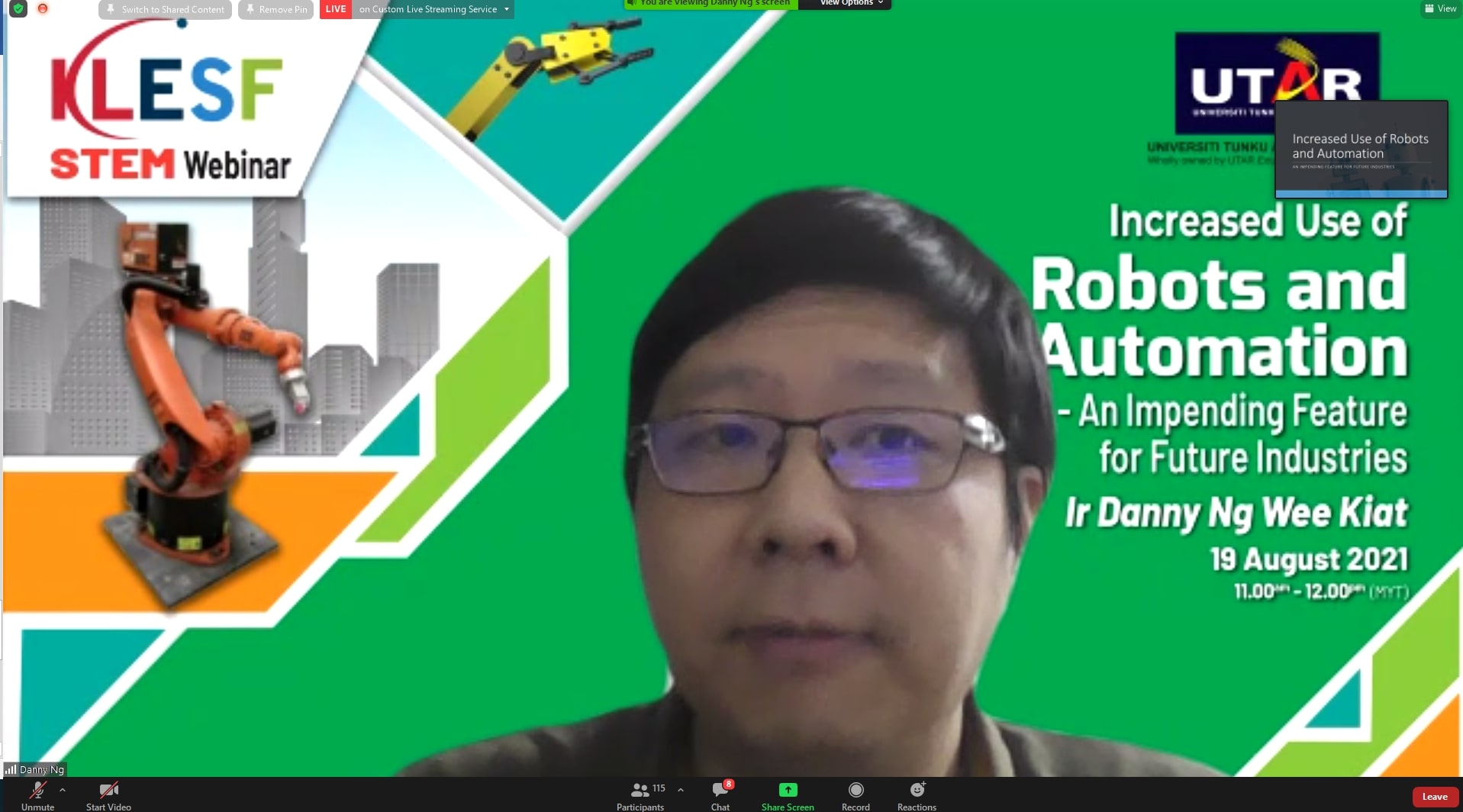
Danny Ng during his sharing session
He then spoke about the evolution of robots. The first prototype of robots occurred in 1958. After two years, the robot was used in the industry. During this period, robots were used by carmakers to automate metalworking and welding processes.
“Thus, the biggest driver behind the use of robots was the manufacturing industry. However, after some time, numerous sectors began driving the improvement in robots. For instance, the Aerospace is the robot used for NASA space rover Mars Landing; Sony Aibo is a kind of companion robot; Xiaomi Robot Vacuum is a household robot; Humanoid Robot is used by Softbank Pepper to serve the customers as well as the famous Tesla self-driving cars that use artificial intelligence,” said Danny Ng.
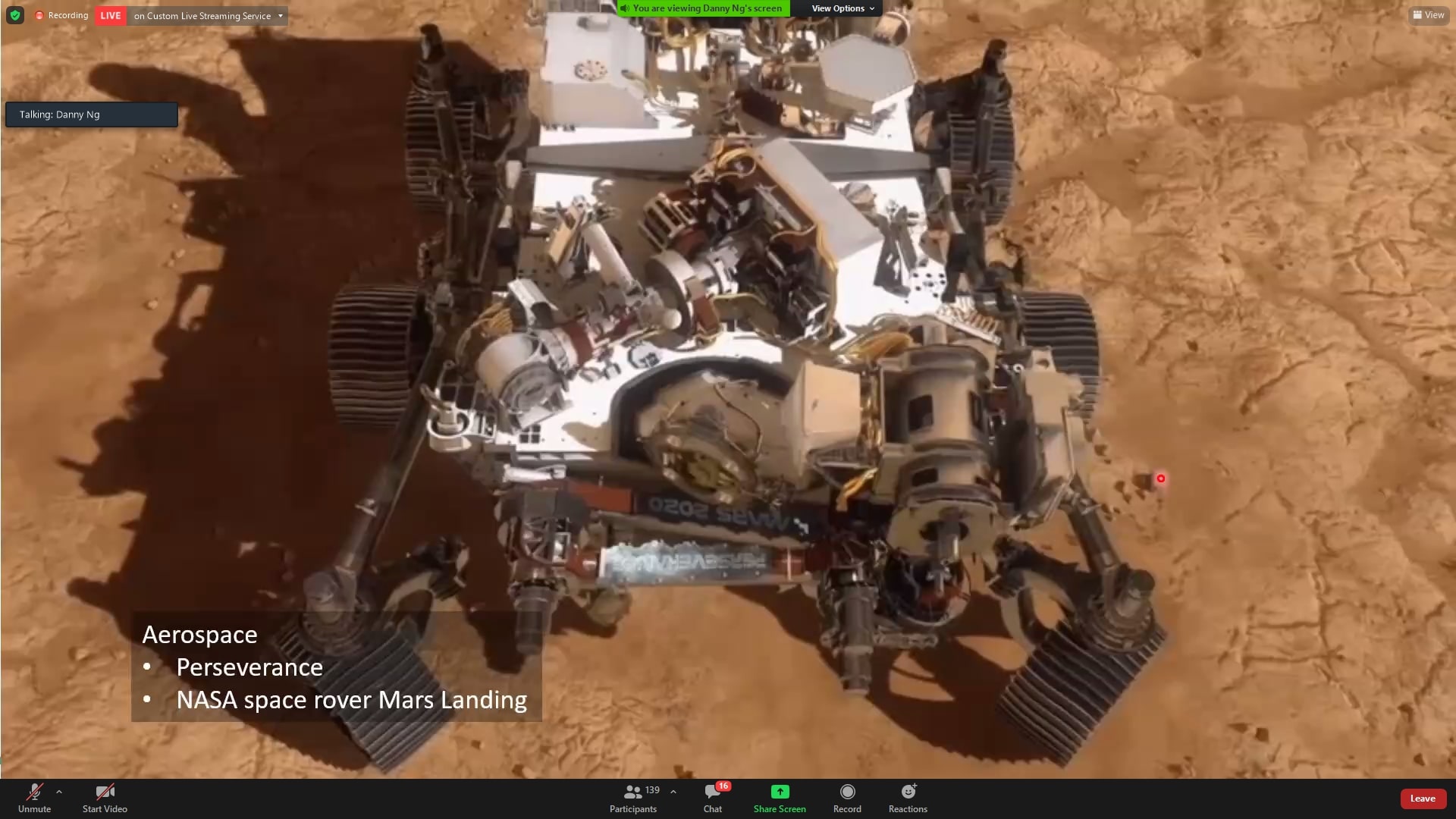
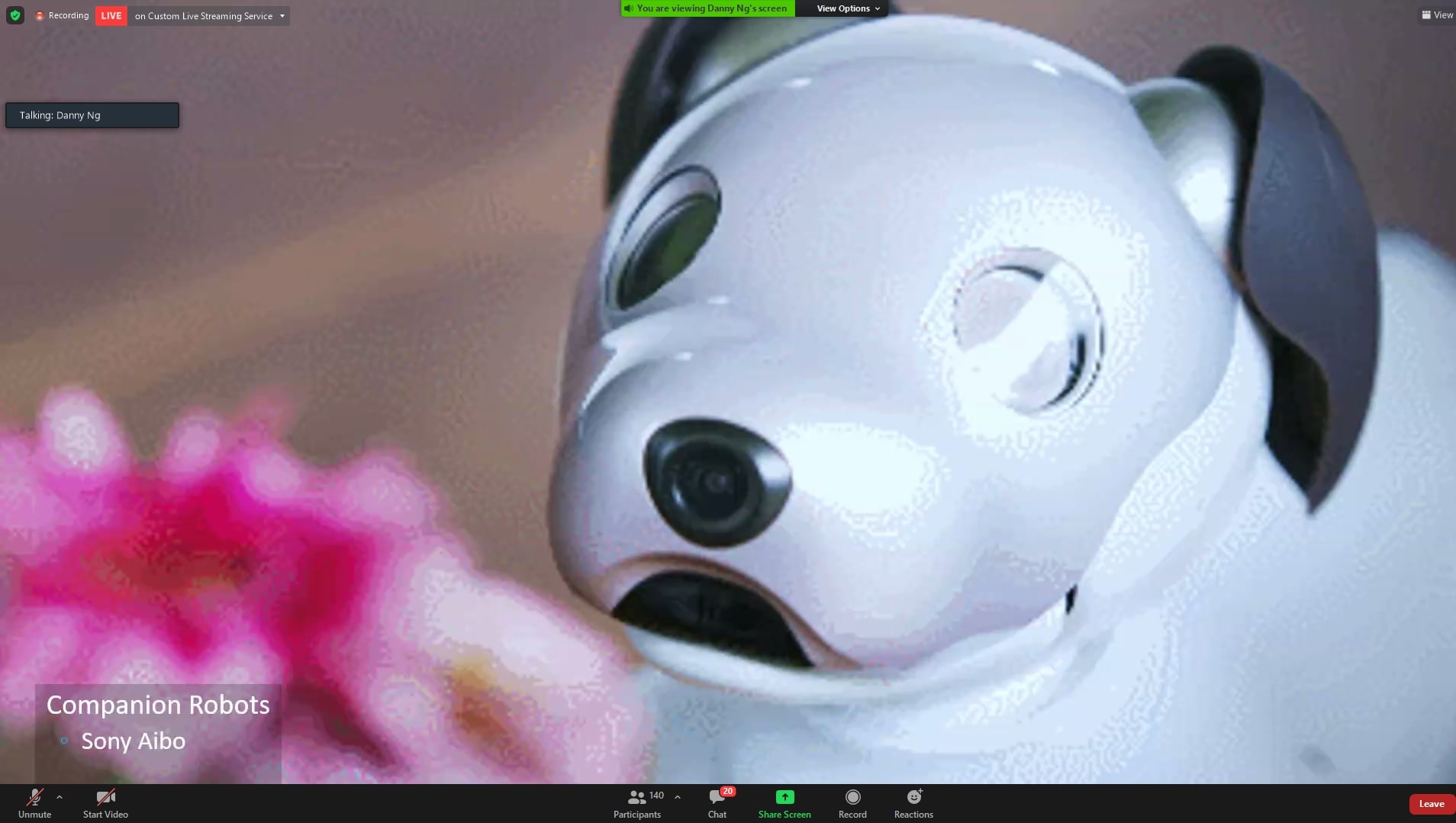
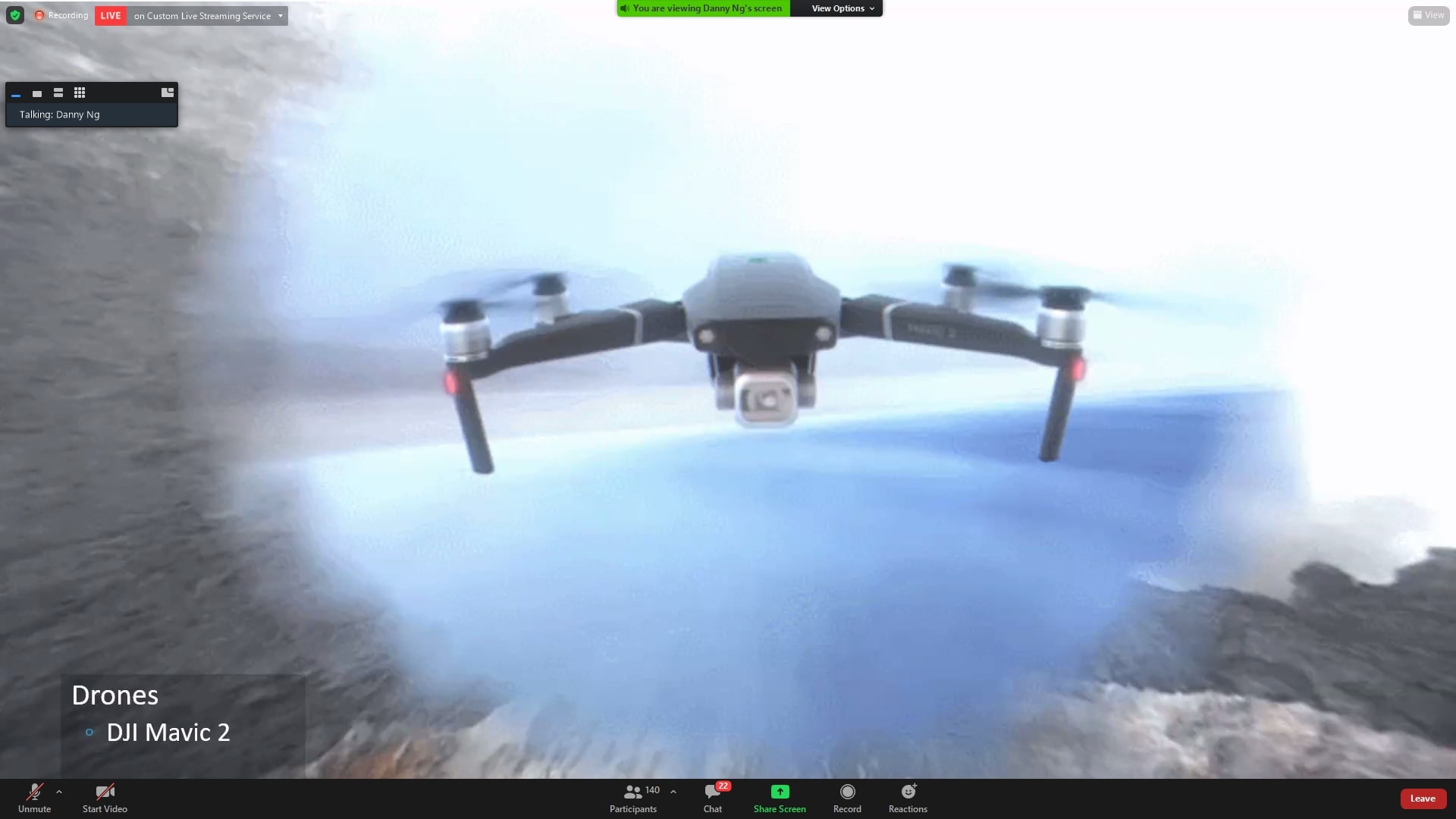
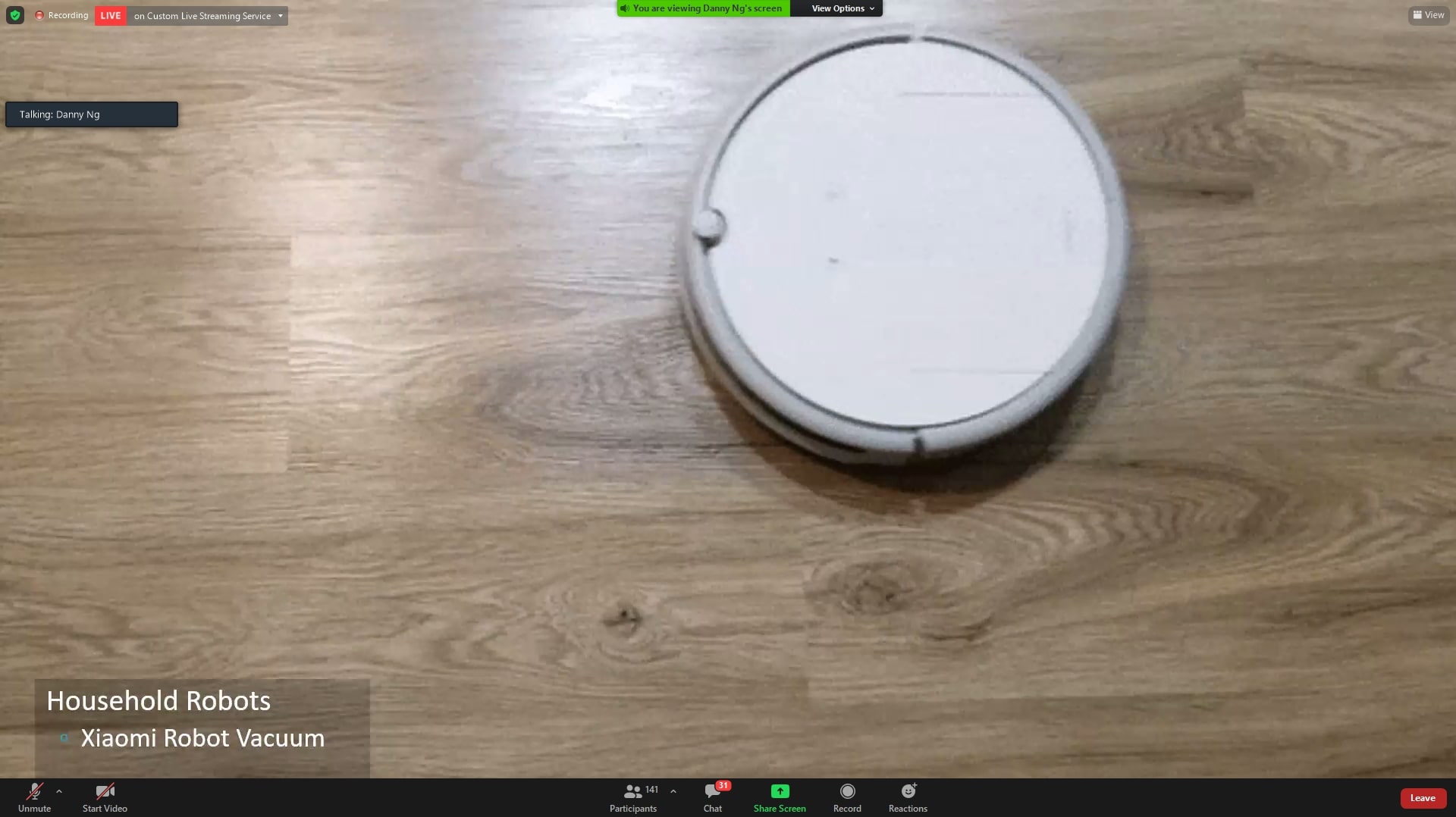
Danny Ng showing the various types of robot
Speaking of the reasons for the adoption of robots, Danny Ng enthused, “By using the robotic system, the industry sectors could reduce operating costs, improve product quality and quality of work for employees. Besides that, the industry sectors could also increase the competitive advantage by applying robotic. It can also help to increase production output, reduce waste and increase yield.”
Throughout the entire webinar, Danny Ng conducted demonstrations on robots and automation in the industries such as the Automated Guided Vehicle (AGV) and Autonomous Mobile Robot (AMR) in Malaysia, the delivery robot called “Makcik Kiah 19”, MR. DIY’s robotic warehouse in Malaysia as well as the Sunway Medical Centre’s robotic surgery – da Vinci.
“In the near future, more robots will be used for machine visions systems, artificial intelligence, integrated smart control system and connective technologies. According to ‘The Future of Jobs Report 2020’ in the World Economic Forum, the responses of companies address the shifting skill demand of future employees in Malaysia including skills to automate work, skills that are relevant to new technologies, outsource some business functions to external contractors who are good in technologies , reduce staff who lack the skills to use new technologies and hire freelancers that are good in skills relevant to new technologies,” said Danny Ng.
He added, “In Malaysia, many industries still have the potential to grow by applying robotic, especially those industries that are labour intensive. For instance, the agriculture sector could use robots for planting, weeding, harvesting and packing.”
Before ending his sharing session, Danny Ng highlighted the need for local research and development in robots for Malaysia’s industries. “It is important to ensure that the robots developed are useful for the local economy,” said Danny Ng.
The talk then ended with a Q&A session and a group photography session.
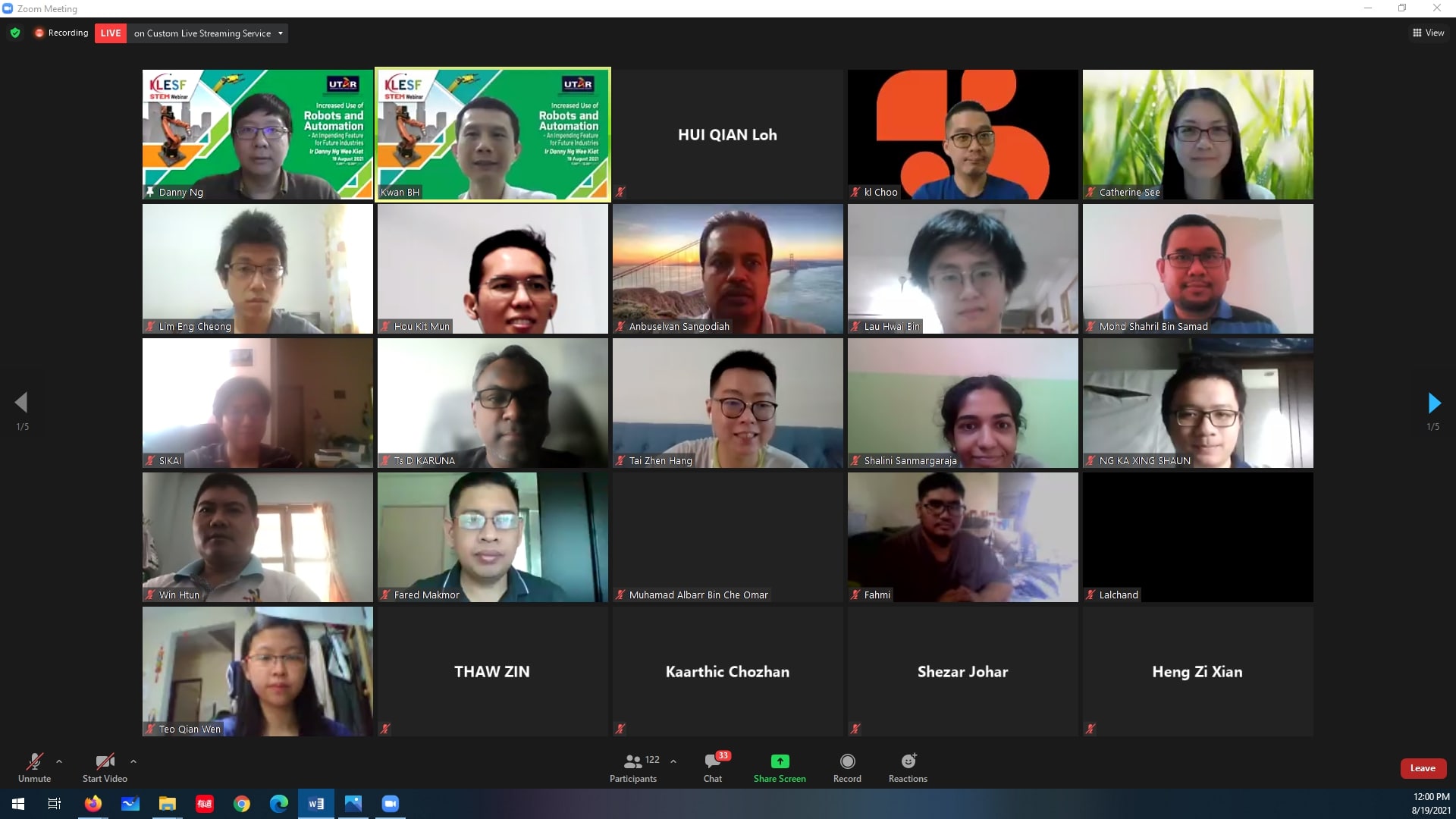
Danny Ng (top row, most left) with participants
© 2021 UNIVERSITI TUNKU ABDUL RAHMAN DU012(A).
Wholly owned by UTAR Education Foundation (200201010564(578227-M)) LEGAL STATEMENT TERM OF USAGE PRIVACY NOTICE